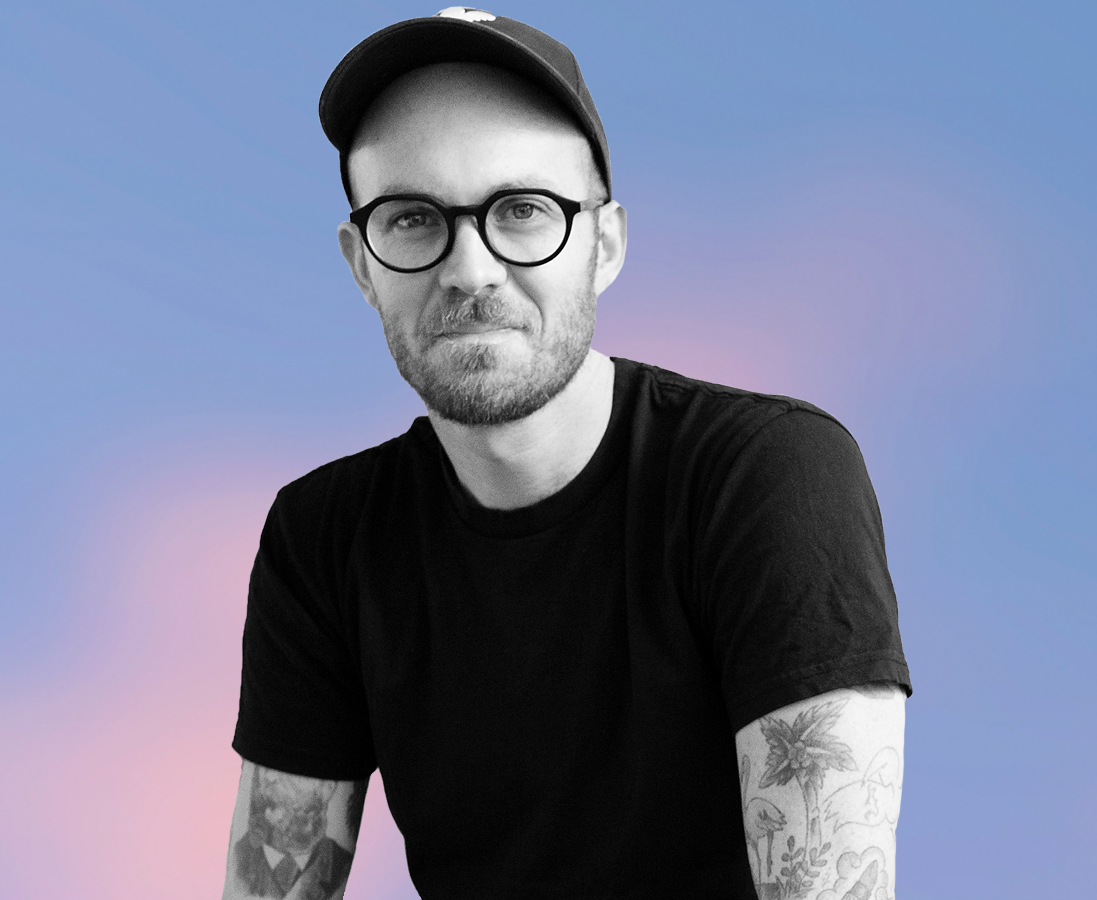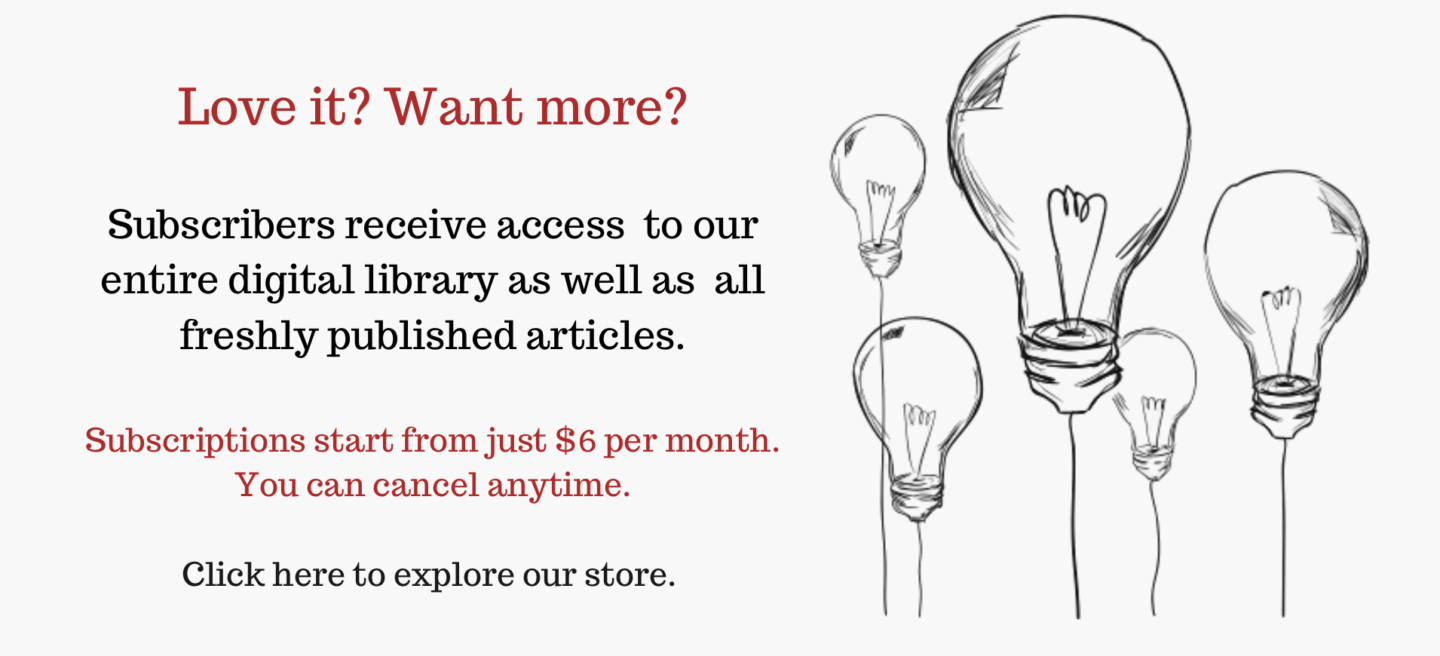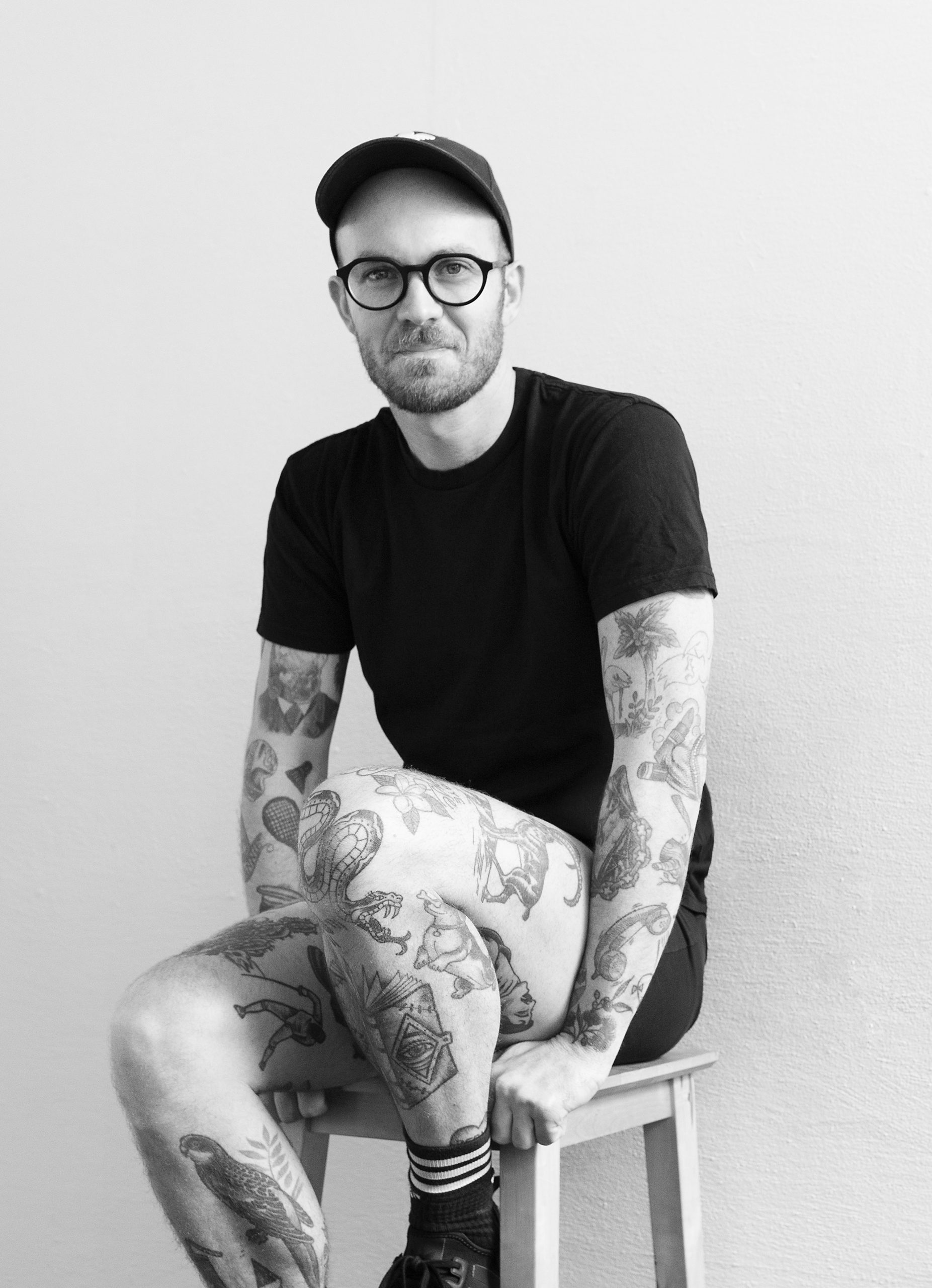Featured in

Griffith Review’s assistant editor, James Jiang, speaks to photographic artist and costume maker, Gerwyn Davies, on the fabric of fantasy, the tactile imagination in his work and the politics of camp aesthetics.
JAMES JIANG: You’ve said that ‘every image starts with the visual properties of the material’, a process that brings your photography close to sculpture. Can you tell us something about the choice of materials in Poof, the cover image for Griffith Review 79?
GERWYN DAVIES: The bulk of the work occurs before the camera comes out and the success of the final image is really dependent upon this fabrication process. I’m looking to build a costume that will not only consume the figure and transform it into something sculptural, but that will also be photogenic. For this reason, I am drawn toward materials with highly textured and reflective surfaces – like sequin, faux fur, spandex, velour – that come alive under flash, ensuring the costumes erupt out of the photographs. All the seductive fabrics that elicit strange sensations and are invitingly tactile feature heavily in my images.
Poof is part of a series, entitled Strange Magic, prompted by an interest in the gaudy world of stage magic and its elaborate displays of smoke and mirrors, spectacular tricks of the eye and confounding sleights of hand. It is a distinctive work as the figure has entirely disappeared, forming a kind of punchline to the rest of the series; however, the same kind of excessive materiality that I apply to my costumes is still at play. The surplus of sequins draws attention toward the form and folds of a levitating magician’s cloak with a series of unusual – almost phallic – contours in it suggesting something is still concealed beneath.
JJ: I’m interested in the relationship between the foreground and background of your photographs, between costume and stage. In some of your work (for instance, the Iridescent series where each photograph responds to an historic site managed by Sydney Living Museums and the NSW State Archives), the costume riffs on, or is at least provoked by, some environmental cue. Yet in others (the Strange Magic series), the background is minimal or unplaceable (there’s a weightlessness I associate with the decontextualised quality of stock photos). What is the relationship between the photographs with site-specific detail and those with more abstracted backgrounds?
GD: Photography’s attraction for me is its potential to fashion fantasy rather than its ability to capture the world before the camera, so the kind of images that I tend to make are highly contrived.
The Iridescent exhibition, commissioned by Museums of History NSW, was very much site-specific and it was intended to showcase and delve into the lesser-known histories of these spaces. The physical sites then, as you mentioned, were more stages than backgrounds. The emphasis was placed upon research, narrative and costume, while the ‘real world’ environments were left largely unadulterated. An image like Poof is the complete opposite: a synthetic scene that only exists inside the world of the image, which is more representative of the way I would typically approach making images.
The landscapes are a very considered component of the work. I use postproduction to manicure the locations captured within the images, evacuating them of substantial detail and massaging the photograph so that it begins to take on a queer artificial glow. Gradually, the world within the image is transformed, tipping from the photo- into the -graphic, and a varnished landscape emerges. What begins as an image of a ‘real world’ site becomes something more spectacular and fanciful, a place more tailored to the figure contained within, a digital habitat of sorts.
Through this process I am also trying to conjure a degree of impenetrability, a cartoonish collapsing of foreground and background, that stands in contrast to what is typically desired from a photograph – a representation that we can be drawn right into.
JJ: I want to ask you about the place of the body – your body – in your photographs. You’ve said that ‘the goal is always to eradicate the figure in some sense, to shift away its human configuration’ and part of what’s being enacted in your photographs is a drama of effacement. And yet the body never disappears completely; the eradication is never total. I’m thinking here particularly of the fleshy liveness of the tattoos that appear in some of your work. Can you say something about the significance of these lingering traces of the body in your photographs?
GD: There is a tension that I am trying to provoke – a back-and-forth between invitation and denial, visibility and invisibility, surface and depth – that arises in various ways throughout the work. It is in the presentation of the figure and its ‘lingering traces’, the cloak of costumes with their vibrant materiality, the seductively polished yet impenetrable terrain of the images. I am interested in drawing out these confusions as much as possible.
As a medium bound up in exposure, the camera is trusted to reveal something of a subject and to allow the viewer an opportunity to pore over their details unrestrained.
In my own work, there is a double bind in which a figure is conspicuously produced for the lens while remaining nowhere to be seen, a hiding in plain sight. There is a perversion of the representational act, a complication of the viewer’s gaze and a production of a queer in/visibility.
When I started making the work, I would conceal my tattoos with costume or remove them through postproduction, to be further depersonalised or disappear. I have substantially more tattoos now, however, so that horse has bolted. What occurred to me through the making process is that the tattoos function as a secondary costume of sorts, enhancing the very same tensions I am interested in. Tattoos invite attention but redirect it and suspend it upon the surface of skin and, in this way, also complicate visibility and control the viewer’s gaze.
JJ: With its playful indulgence in artifice, your work embodies the spirit and aesthetics of camp, which was also the subject of your doctoral project. Do you think the ethical or political stakes of camp have changed with the mainstreaming of queer practices such as drag?
GD: There has definitely been a shift in the political impetus of camp, along with the broader recognition of and appreciation for its productions, but I believe such a shift should only sharpen its potentials.
As a mode of performativity, camp initially provided a very useful means of furtive communication: a coded system of language and gesture predominantly engaged in by queer men that offered a way of stepping spectacularly into the world, of forging connections with like-minded individuals while still maintaining a protective armour. While the expansion of LGBTQI+ rights, enhanced visibility and the mainstreaming of queer practices mean the clandestine element of camp’s origins has become less critical to a lot of its original proponents (at least from a Western perspective), it encourages us to consider and celebrate the ways that other marginalised groups have, and continue to deploy, practices we might describe as camp.
Rather than simply a gay performativity or a tongue-in-cheek taste for the démodé, a more expansive view of camp considers the deliberate use of strategies such as excess, embellishment, and incongruity by its aesthetic champions as a means of stepping into the world of representation, taking greater control of its terms and resisting the constraints and expectations of normativity – things that still carry immense weight for people of diverse subjectivities.
JJ: I’d like to hear you say more about the simulation potential of photography. With the increasing accessibility of virtual reality and deepfake technology, do you see your work as necessarily having to extend beyond the still image, or is there something about the constraints of the medium that remain generative for you?
GD: The notion of constraint has certainly kept me returning to the photographic still. With my interest in constructed images, the fixed perspective of the photograph has meant full control over how the viewer engages with the work: they are unable to peer around the corner of the image; they are limited to the fantasy fixed before them. Having said that, my most recent exhibition, Mustang, extends into both moving image and textile-based wall works, while the Iridescent exhibition featured costumes alongside the photographic works.
The predominant process in my practice is very tactile: the design, construction and wearing of costume. Likewise, the performance before the camera is incredibly physical. The costumes are bulky, hot, both my breath and vision are restricted and I frequently step out of the costume sweating and gasping for air. People viewing the work have often been attuned to the emphasis on the body beneath the shiny veneer of the images. They can imagine the sensation of fabric rubbing, sticking and scratching the skin, and this has been something I have then sought to feed back into, and exploit from, the work further.
I am drifting toward the inherent materiality of the work rather than the technological. As the work begins with and is so heavily guided by materials, it is fitting that this tactile element returns in some semblance to accompany the photographic display.

Share article
About the author

Gerwyn Davies
Gerwyn Davies is a photographic artist and costume maker whose work has been exhibited in Brisbane, Sydney and Berlin. He has taught at the...